119 videos match your search.
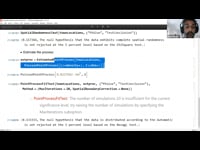 |
Eduardo Serna, PhD In this talk, Eduardo Serna explores existing and upcoming Wolfram Language functionality designed for the analysis and modeling of spatial point data. |
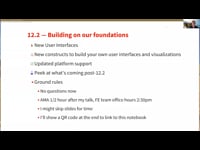 |
John Fultz John Fultz, Director of User Interface Technology for Wolfram Research, surveys the new functionality in the 12.2 notebook interface, along with some sneak peeks at the experimental technology being developed for ... |
 |
Robert Nachbar In this talk, Robert Nachbar will describe the ongoing efforts to fully explore the effects of network topology and various mixing scenarios on the dynamics of COVID-19 disease spread throughout the entire population. Comparison of ... |
 |
Adam Strzebonski Recent releases of Mathematica have significantly extended the exact global optimization capabilities, and more optimization methods are currently under development. In this talk, Adam Strzebonski shows some examples of Wolfram ... |
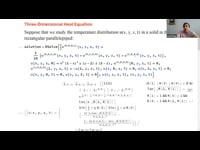 |
Unal Goktas This talk by Unal Goktas presents an overview of solution methods for partial differential equations (PDEs) in the Wolfram Language. It covers not only the classical methods but also relatively ... |
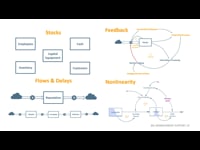 |
Guido Wolf Reichert This talk provides a quick tour of the new Business Simulation library (BSL) available in Wolfram System Modeler. BSL employs a-causal "physical" connectors to enable very compact and convenient model ... |
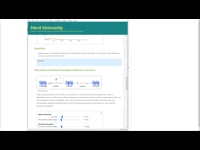 |
Ankit Naik This presentation from Ankit Naik focuses on how System Modeler is used to make teaching come alive. There is an overview of Wolfram Virtual Labs included. |
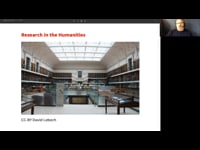 |
William Turkel Mathematica's high-level commands and holistic approach make it possible for a single programmer to implement relatively complex research tools that are customized for a particular study. Here William Turkel shares ... |
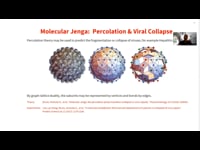 |
Nicholas Brunk, PSM, MS Graph-based percolation theory may be done in the Wolfram Language, to aid in the understanding of viruses, their disassembly and collapse. After forming predictions in the Wolfram Language, this analysis ... |
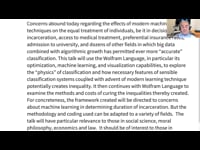 |
Seth Chandler Seth Chandler uses Wolfram Language to first explore the "physics" of classification and how necessary features of sensible classification systems coupled with the advent of modern learning techniques potentially create ... |
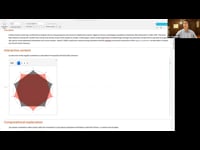 |
Eric Weisstein The History of Mathematics Project highlights physical artifacts important to the history of mathematics. The Project is accessible to children and experts alike, with virtual exhibits and their navigation entirely ... |
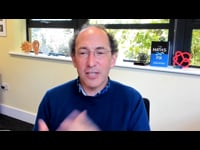 |
Conrad Wolfram In this talk Conrad discusses why he wrote The Math(s) Fix and what he aims to achieve with it. Additionally, he will propose ways in which the Wolfram technology ... |
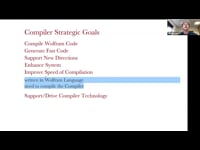 |
Tom Wickham-Jones This talk features Tom Wickham-Jones describing the Wolfram Compiler: its benefits and goals of the long-term project. The Wolfram Compiler converts Wolfram Language into native machine code, thereby combining a ... |
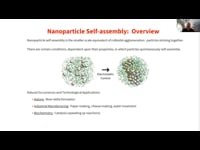 |
Nicholas Brunk, PSM, MS The Wolfram Language facilitates a broad variety of scientific and industrial workflows.In this talk, Nick Brunk highlights Wolfram Language facilitation of high-throughput, experimentally validated molecular dynamic (MD) simulations of ... |
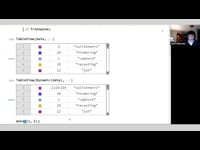 |
Jason Abernathy |
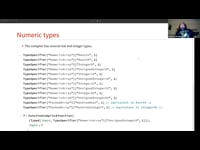 |
Matteo Salvarezza Matteo Salvarezza presents a new neural net layer in Wolfram Language 12.2. Leveraging the new Wolfram Compiler, it allows users to implement custom operations and freely use them with the rest ... |
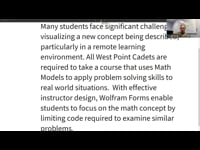 |
Timothy Newlin CPT Timothy Newlin of West Point talks about how he uses Wolfram technology for online math courses. With effective instructor design, Wolfram forms enable students to focus on the math ... |
 |
Fei Du After Q1 2020, companies were urged to disclose COVID-19's impact on their businesses in earnings conference calls. In this talk, Fei Du discusses her line-by-line transcript analysis of both the ... |
 |
Maureen Baehr, Ben Kickert SDGCounting uses the Wolfram technology stack to track and report progress made around the UN's sustainable development goals (SDGs). As the capabilities of Wolfram evolve, our methodologies and uses also ... |
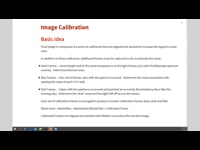 |
Tom Sherlock The Wolfram Language provides many features that facilitate the data and image processing associated with astrophotography, including image and video import and export, arithmetic and statistical operations, filtering, and parallel and morphological processing. Wolfram Language code can process noisy image data into much-higher-quality images. Tom Sherlock explains how to filter, align and stack still image data in order to reduce noise ... |